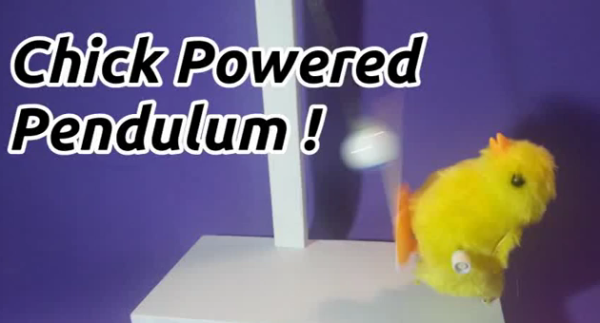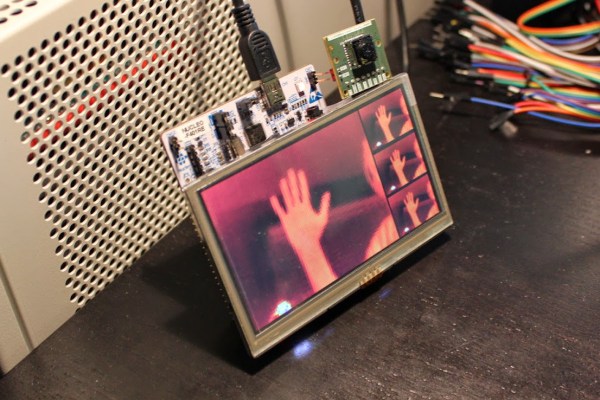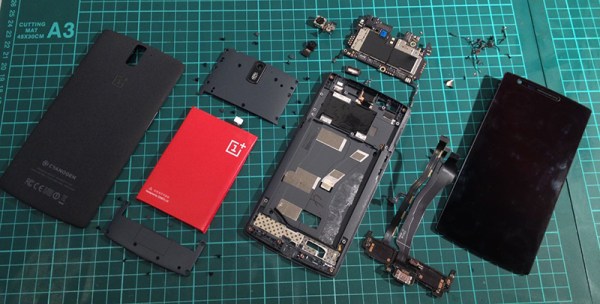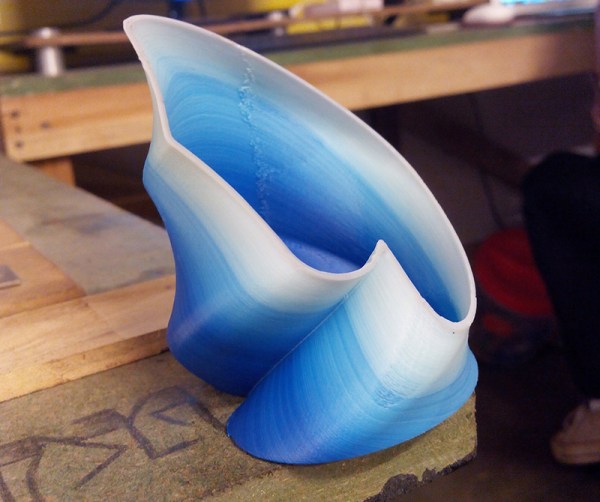Every once in a while we get sent a link that’s so cute that we just have to post it. For instance: this video from [Ludic Science]. It’s a wind-up chicken toy that kicks a pendulum back and forth. No more, no less.
But before you start screaming “NOT A HACK!” in the comments below, think for a second about what’s going on here. The bird has a spring inside, and a toothed wheel that is jammed and released by the movement of the bird’s foot (an escapement mechanism). This makes the whole apparatus very similar to a real pendulum clock.
Heck, the chick toy itself is pretty cool. It’s nose-heavy, so that under normal conditions it would tip forward. But when it’s wound up, tipping forward triggers the escapement and makes it hop, tipping it backward in the process and resetting the trigger. The top-heavy chicken is an inverted pendulum!
And have a look, if you will indulge, at the very nice low-tech way he creates the pivot: a bent piece of wire, run through a short aluminum tube, held in place by a couple of beads. Surely other pivots are lower-friction, but the advantage of using a rod and sleeve like this is that the pendulum motion is constrained to a plane so that it never misses the chicken’s feet.
Our only regret is that he misses (by that much) the obvious reference to a “naked chick” at the end of the video.

















